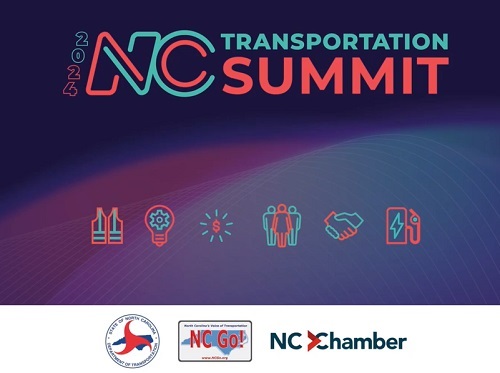The North Carolina Department of Transportation hosted the state’s fifth annual “N.C. Transportation Summit” May 21-22 at the Koury Convention Center in Greensboro, NC, and staff from the American Association of State Highways and Transportation Officials participated on key safety and funding panels at that event.
[Above image by NCDOT]
This yearly conference explores transportation topics related to safety, funding, and innovation as the agency maps out the mobility future for the state’s growing population – a focus reflected in the video overview of the summit below.
Governor Roy Cooper (D) highlighted some of those issues in an address during the second day of the summit.
“The challenge of quality transportation is much broader and more comprehensive now,” he explained. “Good airports, ferries, ports, bridges, trains, buses, bicycles, and more continue to improve our economy and our quality of life in terms of getting people from one place to the next in ways that are faster, easier, safer, and cleaner. We know that our transportation system is our [state’s] backbone and have we got to be ready to meet the moment. That means making sure people can get to work, schools, doctor appointments, and vacations – while making sure supplies and goods are delivered safely and on time.”
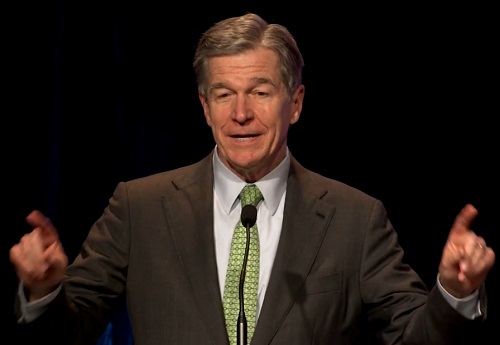
The governor said that also means making sure North Carolina is building a transportation system that works for everyone; particularly by paying attention to “vulnerable” communities.
“We need a system that’s more inclusive of all modes of transportation and that gives people options when not everything goes according to plan,” Gov. Cooper noted. “It is one that must utilize modern technologies; that is safer and more environmentally friendly; a system that is more accessible and equitable to people from all locations and all walks of life; and one we know that in the future will be clean, connected, and automated.”
King Gee, AASHTO’s director of safety and mobility, discussed how a renewed focus on safety fits into that state transportation view during a breakout session at the summit entitled “Securing Our Streets: Safe Roadways Everywhere, for Everyone” particularly through the “Safe Systems Approach” being incorporated by many state departments of transportation across the country.
“In many ways I think we are in an inflection point because of the focus the CEO level people [in state DOTs] are putting on this issue,” Gee explained in his remarks.
“We need to rethink how we design our transportation infrastructure and rethink what the transportation solutions are when we come to this current situation of fatalities on our roadways,” he said.
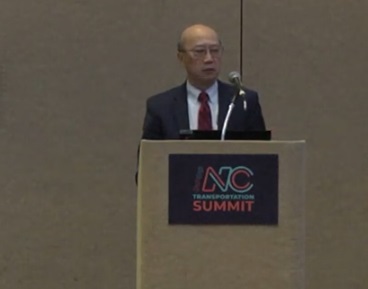
“That’s why we are really focused on the ‘Safe System Approach’ because it is coming to realization and the acceptance that people make mistakes, but people shouldn’t have to die because of them; it’s coming to realization that we need to deal with safety problems from an engineering perspective, from educational perspective, from an enforcement perspective, and Emergency Medical Services perspective. It is a shared responsibility and, as infrastructure people, we can’t just stay in our lane,” King noted. “We need to see what we can do working together with everyone.”
In terms of reducing motor vehicle crashes, as well as the injuries and the fatalities they cause, Gee said it requires a more “system wide” focus on eliminating traffic “conflict points” or mitigating the issues created by such conflict points.
“Maybe you can’t eliminate the conflict points, but if you can slow people down – for example, via roundabout intersections – you can reduce the severity of what happens if there is a crash,” he said. “This is part of our steady movement in state DOT thinking from just ‘builders’ to operators and now mobility managers; it is now not just about moving cars and trucks, but moving people from point A to point B safely and in a more multimodal sense.”
Gee also noted that AASHTO hosted a national “Safety Summit” in October 2023 – with plans to hold a similar event in the fall of 2024 – that helped the organization develop a “safety resolution” followed by a Safety Action Plan for its membership.
“It is about rethinking how we approach providing transportation to the public; one of which is that we need to be looking at safety from an agency-wide perspective,” he said. “It is not about just leaving safety concerns to the safety professionals and safety engineers. All of us have a role to play in really enhancing safety throughout the project life cycle from planning on through design and construction and beyond.”
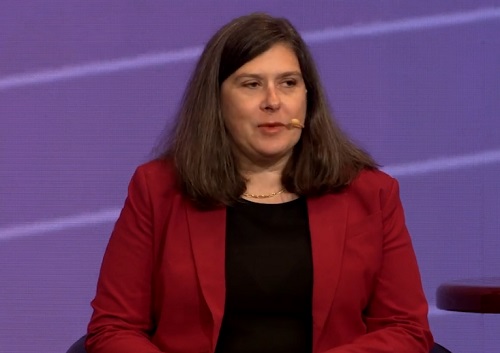
Susan Howard, director of policy and government relations, participated in a “Funding the Future of Transportation” roundtable at the summit that examined ways to address some of the long-term fiscal issues facing the industry.
“If you look across the country, there is no one magic formula for coming up with sustainable transportation revenue,” she explained. “So you want to look for revenue sources that become more diverse and flexible as you go to meet the changing demographics that you face in your state.”
Howard noted that while many states are looking to deploy a per mile road usage charge or RUC to replace the traditional tax on fuel, largely as fuel tax revenue has been declining for years, she added that many states are looking at “multiple options; a whole menu of resources” to fund their transportation systems into the future.
That includes everything from freight industry fees to “transportation network provider” fees on ride-hailing services like Uber and Lyft, sales taxes dedicated to transportation, as well as fees on new vehicles.
“I think the general trend is probably expanding the user fee base and looking to alternative sources of funding that are more sustainable over time compared to fuel taxes. But what’s critical when you are looking at taxes and fees related to transportation is to make sure they’re used for transportation purposes; that really goes a long way to ensuring that the public and voters really have support for those transportation taxes and fees,” Howard stressed. “That is what will carry them through the next few generations.”
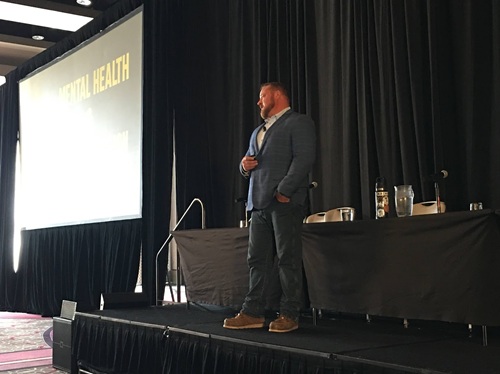 Top Stories
Top Stories
Safety Summit Addresses Employee Mental Health
November 7, 2025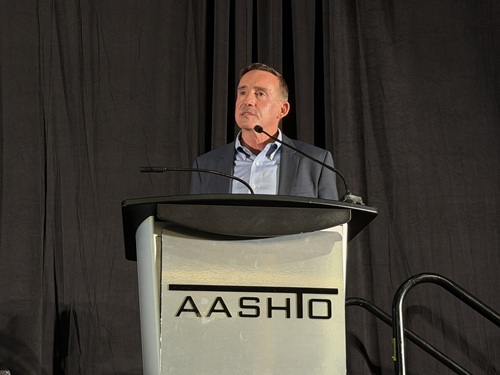 Top Stories
Top Stories
